| May 2022 | | | As the weather changes, the pets are feeling it- some of the older pets are getting more crotchety, and the cats are getting cuddlier. Make sure that the beds are adequately warmed, and dogs are wearing jackets if needed. If there are pets needing Zydax injection, let us know. We have nurses available to help you with this.
Andrew Denman (pictured, proud as punch with his cake) and Nurse Peta both celebrated big birthdays last month. Happy birthday also to T'Mielle- don't worry, she got cake too!
Orange's cold weather we have here isn't enough for Grace King who has been on reception- she's voyaging off to Canada for even colder pursuits! Hermione has stepped into reception to fill the void that Grace's departure has left. | | | Contact us |
|
|
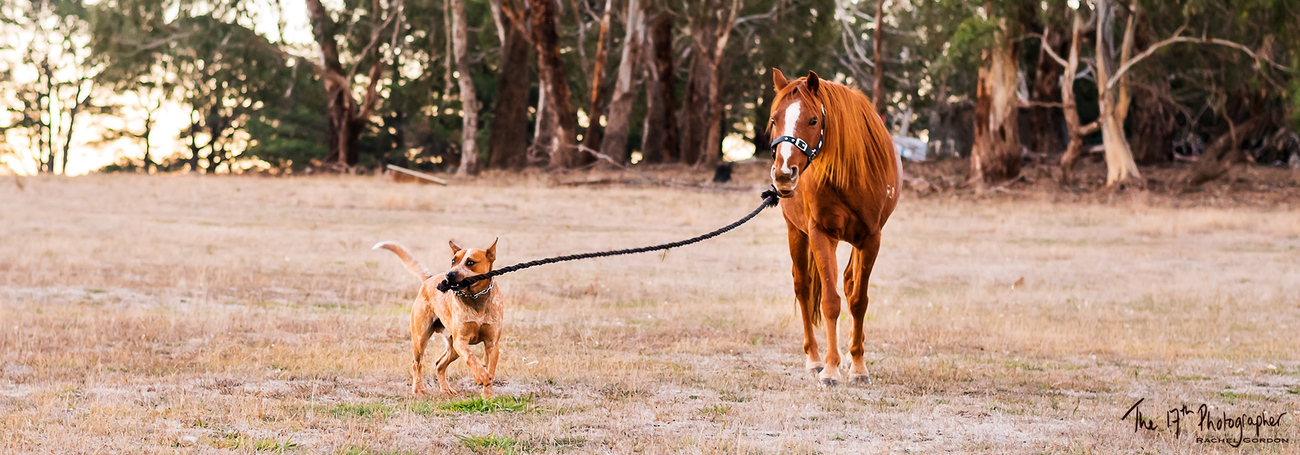 | | Keeping in step with cold weather | | | Arthritis is degenerative joint disease. Like many of us, older pets in particular may be slowing down with the temperature changes that occur through winter. Changes occur in the ends of the bones, the cartilage, joint capsule, and the fluid within the joint. These changes can be caused by old age change, poor conformation, or may come after previous trauma to a joint or leg.
For cats and pocket pets, the signs can be more subtle. Your pet might be toileting in a different spot, unwilling to jump up stairs or on furniture, or waking up at unusual times.
Concerned? Let our vets help. At the clinic, the vet will first check your pet’s joints for thickening, pain, reduced range of motion, changes to the bony structures and crepitus (a crunchy feeling when moving a joint). Some animals that are in pain can also be cranky, and snappy at people or pets they usually get along with. Any of these changes may indicate your pet has arthritis. Your pet may require x-rays to confirm the condition & rule out other issues. Blood tests can be helpful for screening that there are not other health issues, and that the medications are likely to be safe.
We are lucky to have lots of options for management of arthritis in dogs, cats and pocket pets these days. Although there are differences across different species, the fundamentals are the same.
- Exercise- low impact steady walks, avoiding the rough and tumble of excessive play or fetch
- Warmth, with warm beds and rugs. Naps in front of the fire, anyone?
- Avoiding excess weight, which puts extra strain on old joints
- Nutraceuticals, like 4cyte (gel or granules), Antinol or Glyde chews
- Zydax injections, which can be done with our nursing team
- Anti-inflammatory medications
- Extra pain management medications, as tablets or injections
- Imaging: to check for surgical options and rule out more serious concerns
- Diet: like Hills Active Mobility or Royal Canin Mobility
- Environmental management, like non-slip flooring, raised food and water bowls
Check out the #itsmyhometoo Home Assessment Tool for Canine Arthritis Management (below). It has been developed with Occupational Therapists and Veterinarians. It's British, but arthritis is the same all the world over! There are lots of management ideas that have the benefits of practicality as well as research backing. You might find a change or too that can make a big difference! |
|
|
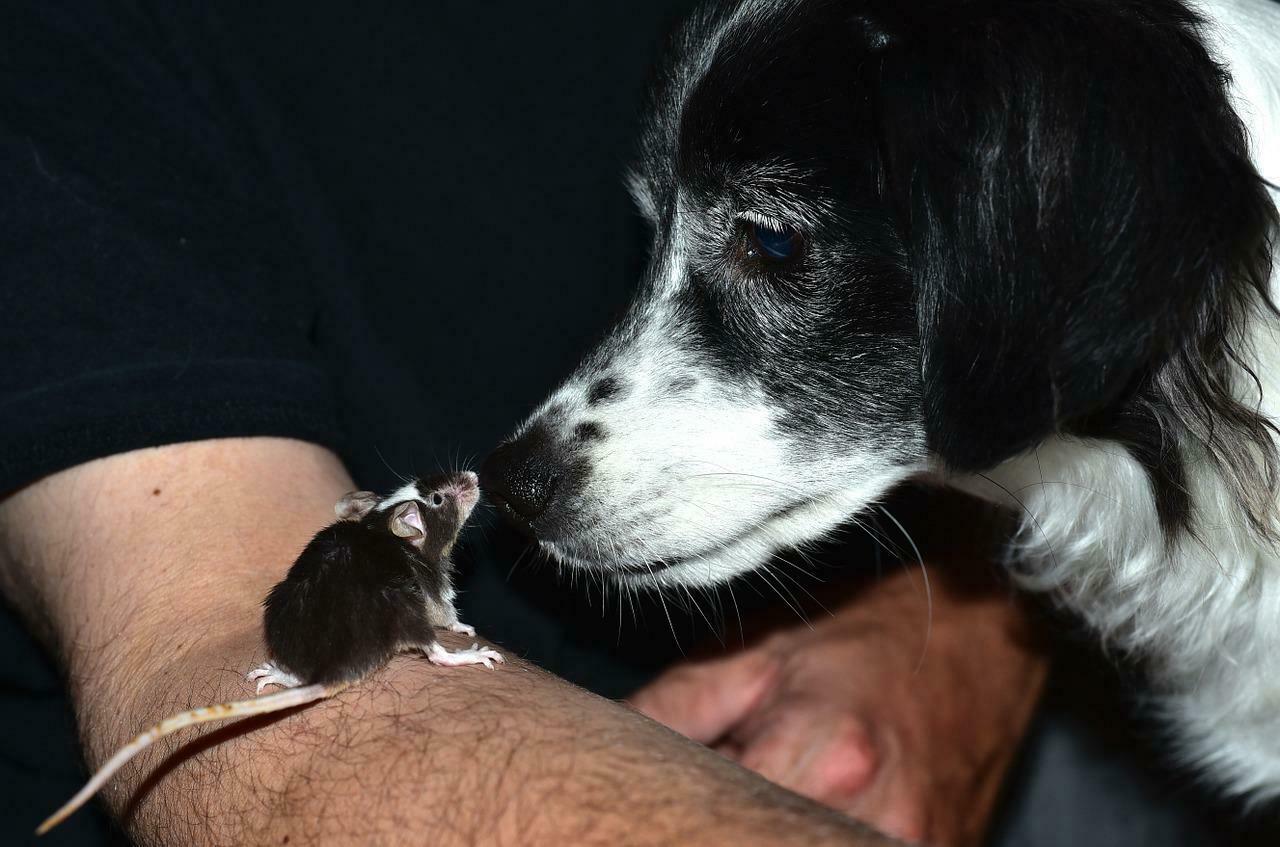 | | Leptospirosis in dogs | | | The University of Sydney has reported recent cases of leptospirosis in dogs.
We ask people travelling their dogs to;
* the Newcastle area
* within a 5km radius of Surry Hills,
* Annandale,
* Balmain or
* Crows Nest
or their immediately surrounding suburbs to discuss leptospirosis vaccination with a veterinarian at their next consultation. This is of higher importance if the dog is in contact with rats or other rodents in these locations.This is not normally a core, routine vaccination locally. At least two vaccines are required in the initial course, as well as boosters. | | | Book Now |
|
|
 | | Common skin lumps | | | Uh oh! You were having a lovely cuddle with your pet when you felt a small lump on their skin… what could it be, and does it warrant a vet visit?
Types of skin lumps
Lumps on your pet’s skin may be areas of localised infection or inflammation, cysts or tumours. Skin tumours are most commonly seen in middle-aged to older pets, however, some tumours, such as histiocytomas and mast cell tumours, can develop in younger pets too. Skin tumours can be benign (i.e. not spreading or causing your pet to become unwell) or malignant (aggressive tumours that can spread around your pet’s body and cause other problems).
Should you just monitor your pet’s lump or get it checked?
It’s best to have any new lump assessed, especially if it’s growing or causing irritation to your pet. In the case of malignant tumours, prompt diagnosis and treatment will improve the odds of a successful outcome.
Our vets will begin by assessing your pet’s lump visually, as certain lumps (such as skin tags) can have a distinctive appearance. If your pet is amenable, we may be able to collect samples from their mass for analysis during the consultation, using a technique called a fine needle aspiration. This involves using a needle to collect material from the lump, and examining it under the microscope for evidence of bacteria, inflammation or distinct tumour cells. The needle is small, and no more invasive than your pet's regular vaccination. Sometimes, these are best assessed in house by our team, or can be sent away for specialist pathologist review.
However, if your pet is wriggly, or if the lump is very firm, difficult to access or we're particularly concerned about it, we may recommend booking your pet in for a surgical biopsy under general anaesthesia. Depending on the extensiveness of the lump, we may remove the entire lump or just a portion, and send the sample to a laboratory for testing.
Once we have a diagnosis for your pet’s lump, we can then make informed recommendations on whether they require any further testing or treatment. With lumps, it’s always best to test!
Get the jump on lumps and bumps with prompt vet checks for your pet! |
|
|
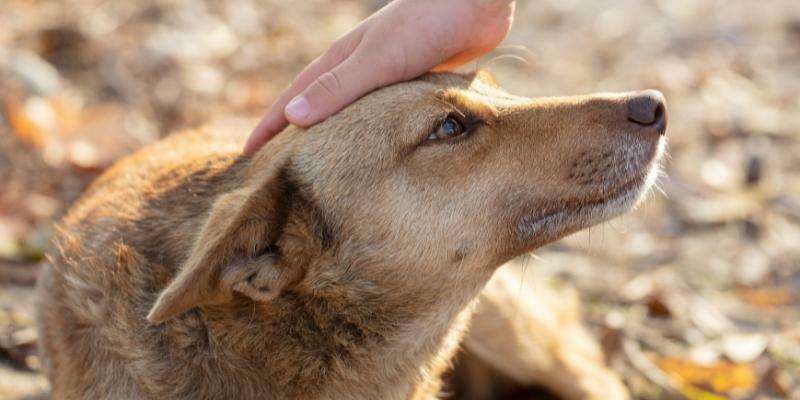 | | Not-so-simple fatty tumours | | | Lipomas are fatty tumours that are commonly diagnosed in middle-aged to older dogs of any breed, but particularly breeds such as labradors, beagles, weimaraners and schnauzers. However, there can be more to these lumps than what first meets the eye! Here are a few lesser-known facts about lipomas.
There are different types of lipoma
The majority of lipomas that we see in dogs are simple lipomas. These benign (harmless), slow-growing masses most commonly form beneath the skin on the body or legs. They generally don’t cause issues unless they grow big enough to cause general discomfort or in a location that impedes walking. Dogs that get one of these are prone to getting other lipomas pop up over time.
On occasion, simple lipomas can actually develop and grow within the chest or belly. If the masses in these tricky areas grow large enough, they can cause breathing problems or abdominal pain.
As well as simple lipomas, dogs can develop infiltrative lipomas. These tumours don’t spread to distant areas of the body, but can invade and cause disruption of surrounding tissues (such as the muscles in the legs), almost like large tree roots. They can also be difficult to remove surgically, often requiring more invasive surgeries and having a higher likelihood of regrowth.
Lastly, lipomas can form as myelolipomas, which are fatty masses within the spleen or liver. These are mostly harmless, insignificant findings but, rarely, can cause bleeding within the belly.
Even if it feels like a lipoma, not every mass beneath the skin is a lipoma!
Some other tumour types, such as mast cell tumours occurring beneath the skin or soft tissue sarcomas, can feel similar to lipomas. Unfortunately, mast cell tumours and soft tissues sarcomas can actually show malignant (harmful) behaviours, so are best diagnosed and treated as early as possible.
Remember: not all fatty lumps can be lumped together!
If you notice any masses beneath your dog’s skin, it’s best to book a consultation so that our experienced vet team can take a look. |
|
|
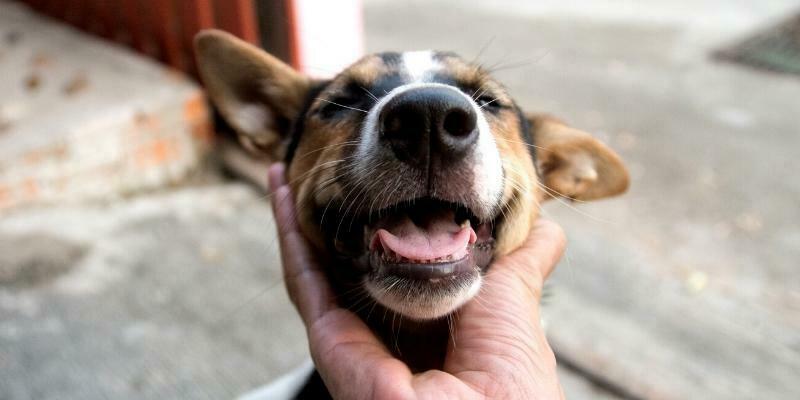 | | When a lump isn't a tumour | | | Yes, a lump on your pet’s skin could potentially be a tumour requiring further investigation. But rest assured, there are a lot of other things it could be too! Here are some common alternative reasons for localised skin swelling in dogs and cats.
Infection
Localised skin infection is most commonly seen in pets as:
- Pyotraumatic dermatitis, also known as a “hot spots”
Hot spots occur when your pet scratches or nibbles at an area of skin irritation, rapidly creating an area of inflamed, oozing and often painful skin that can become infected too. These areas often need to be clipped and cleaned often under sedation, and treated with anti-inflammatories and antibacterial treatments.
- Abscesses
Abscesses are pockets of infection that can form beneath the skin due to penetrating injuries such as cat bites or foreign bodies (e.g. grass seeds). They may require surgery to drain out pus, extract any foreign bodies, and cut out damaged tissue.
Allergic reaction
Hives are areas of skin swelling which often occur during allergic reactions to insect bites or contact with certain plants, foods or chemicals. Hives can often be treated with short courses of antihistamines or anti-inflammatories, and avoidance of the underlying trigger.
Cyst
Sebaceous cysts are skin swellings containing thick creamy sebum material, and occur when sebaceous (oil) glands in the skin become blocked. Unless they become irritated or infected, they can be left alone.
Callus
Calluses are areas of thickened skin over pressure points, commonly developing on the elbows of large breed dogs who lie on hard surfaces. Calluses do not require medical or surgical treatment unless they become infected or irritated.
It is recommended to provide comfy beds off concrete, as mattresses or as suspended trampoline beds. This can also be helpful in these colder months with some of the aches and pain that arthritis and degenerative joint disease can cause.
If you find any skin swelling on your pet, the best course of action is to have it checked promptly by one of our vets. |
|
|
 | | Whelping worries | | | Determining normal pregnancy is challenging. The pregnancy length can differ per breed, litter size, and cannot easily be predicted from the breeding date. Diagnostic tools such as progesterone data, fetal diameter based on ultrasound, and rectal temperature monitoring can assist.
Indicators of the impending birth
* Behavioral changes
* Nesting
* Lactation
* Drop-in rectal temperature 0-24 hours prior
* Progesterone levels drop below 6nmol/L 0-6hrs prior
* Fetal heart rates drop below 160-180bpm
The first stage of labour can be rather secretive. Bitches are usually restless, panting, pacing and generally trying to get comfortable. They often don't want to eat at this stage, and shiver intermittently. The second stage of labour brings more forceful uterine contractions, and the delivery of foetuses. One pup should be born at least every 2 hours. A pup within 20 minutes of continuous abdominal contractions. Some bitches may have a break without contractions in between, especially in large litters where there are lots of pups to re-position. Stage three of labour is the delivery of placentas. The placenta usually comes within 0-15 minutes after each pup or after all pups, and is often eaten quickly by the bitch.
- Signs of a problem- things to watch for:
Occasionally, bitches cannot complete a normal vaginal delivery. Indications for interventions can be based on the absence of labor, the absence of puppies, or illness.
The absence of labor in the event of
> 72 days from breeding
> 66 days from luteinizing hormone (LH) peak
>60 days from day 1 of di-oestrus
>24 hours from fall in rectal temperature
>24 hours from progesterone <6nmol/L
- The absence of puppies in the event of
>2 hours from onset of Stage 2 labor to pup or between pups
>2 hours from onset of green or black or bloody vaginal discharge
>20 minutes active continuous abdominal contractions
Sign of illness
Decreased fetal heart rate to 160-180 beats per minute
Puppy stuck in the birth canal
Weakness or pain
Problems can be caused by a maternal issue or a fetal issue. Bitches >6 years of age, toy breeds and brachycephalic patients have a harder time giving birth naturally. Previous trauma can cause issues in the pelvis. Medical issues like thyroid issues, abnormal hormone levels, or abnormal electrolytes can also interfere with normal birthing. Common fetal problems include oversized puppies, wrong presentations, poor foetal posturing, and even foetal death before birth.
Medical management may include fluid therapy, oxytocin, calcium and other electrolyte supplements, and glucose. A cesarean section is recommended if medical management does not result in the timely delivery of live puppies, if there are lots of puppies yet to come, or if placental rupture or fetal death is suspected.
If you have issues with whelping, or a cat queening, or other animals giving birth, call the team to arrange what best to do next. |
|
|
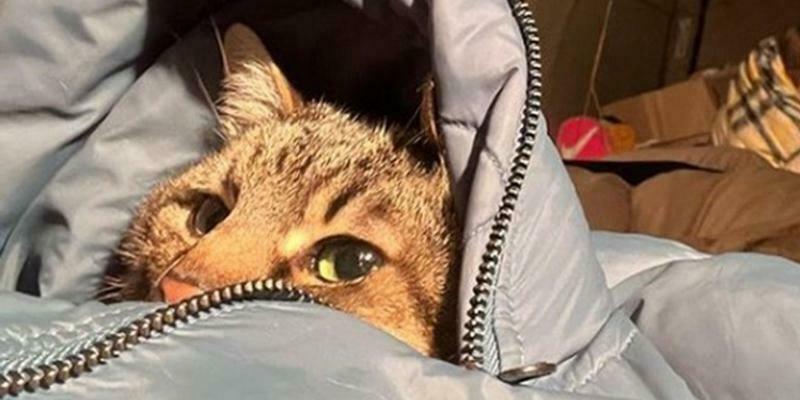 | | Animal News In Brief | | | Stepan the cat hiding in his owner's jacket after shells hit Kharkiv
Image source: Sky News
Insta-famous cat flees Ukraine and raises money for charity
When explosions began erupting onto neighbouring homes on February 24, 2022, black-and-brown-striped tabby rescue cat, Stepan, and his family were forced to leave their home in Kharkiv, north-east Ukraine. Stepan’s owner, 13-year-old Anna, shared the news that Russia had started shelling their city to Stepan’s very own Instagram account, @loveyoustepan, which has a following of over 1.3 million people. When her post went viral, Anna and her family were offered help by the World Influencers and Bloggers Association to relocate to France until the day they can “return home." Anna has been able to use the famous feline’s social media platform to help others, fundraising over $14,048 AUD for animals affected by the war, which will be distributed among the charities Happy Paw, UAnimals, Mykolaiv Zoo, XII Months and Plyushka. The war, as Anna describes on Instagram, is a “big tragedy for my country and people,” but in all of its darkness, Anna is “very grateful for [people’s] support."
Read more about Stepan’s cause from Sky News.
-----
Farm animals heroically saved from flooding
The ongoing floods in NSW have seen many leave their belongings behind as they flee for safety, unfortunately among these belongings are a number of helpless farm animals heartbreakingly left to fend for themselves. Prompted by the good of their hearts, a group of rescuers have been bringing food to the displaced animals and attempting to save as many as possible, with one rescuer, Josh Robinson, describing the animals being “pretty much underwater.” With emergency resources already overwhelmed, locals are doing all they can to help. "We call the SES, they tell us to call the police, the police tell us to call the RSPCA and they tell us to call the SES again, so we are just going in circles,” said Mr Robinson. One rescuer on the frontline, horse breeder Thomas Jones, says he’s “out here risking [his] life," because knowing that animals are out in the floodwaters just “doesn’t sit well [with him] at all.” The volunteers, courageously saving countless animals, “come from everywhere,” said Mr Robinson, just to “do what [they] can.”
The seemingly endless natural disasters of late show just how important it is to have a plan for emergencies. Read more about the NSW flood volunteers from Nine.
-----
Sustainable options for when your pet ‘bugs’ you for a treat
Six women from Washington have created a startup company for dog treats made from insects. Dubbed ‘Just Right Bite’, the business is driven by the team’s collective interest in sustainable food options for their pooches. As methane production from mass farming industries continues to impact climate change, incentives for new treat alternatives are emerging. Working in their own kitchens, the Just Right Bite team used the $595 prototype grant they were awarded from the Buerk Center for Entrepreneurship to create a type of insect-based flour that could be used in the pet treats. After finalising their product, they entered the 2022 Alaska Airlines Environmental Innovation Challenge competition, where pets and humans trialled the treats. Becoming a hit, the Just Right Bite team won a $10,000 prize from the Herbert B. Jones Foundation. The team are now figuring out which avenues they’ll take to grow their brand and make the word on their treat, the word on the street.
Read more about Just Right Bite, the sustainable dog treats start-up from GeekWire. |
|
|
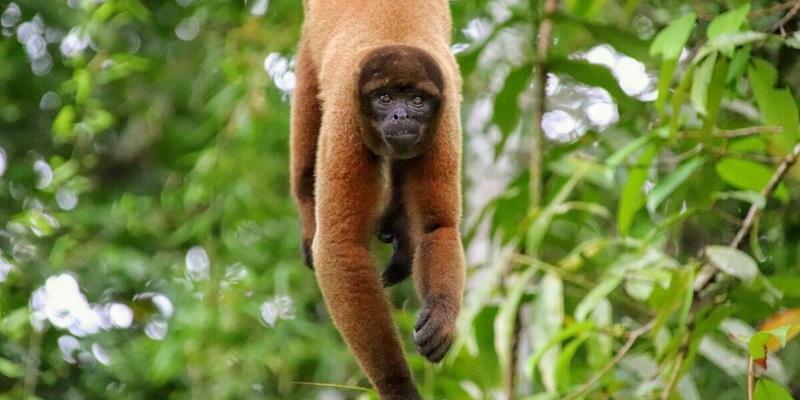 | | Ecuador grants rights to individual nonhuman animals | | | For the first time in history, a nation has chosen to acknowledge the rights of individual wild animals.
When Ecuadorian environmental lawyer, Hugo Echeverría, won a groundbreaking case for a woolly monkey named Estrellita in February, he paved the way for the rights of individual nonhuman animals to be legally recognised throughout the country.
The ethical conundrum of Estrellita’s case begins when she was taken illegally from the wild at just a month old to live with librarian Ana Beatriz Burbano Proaño and her family.
Over the 18 years that Estrellita lived with the Burbano Proaño family, she adopted the family's customs and learnt to communicate and develop relationships with them, with Ms Burbano Proaño even considering herself Estrellita’s mother.
But when the Burbano Proaño family’s housing of Estrellita was reported to the Ministry of Environment in 2019, she was seized by Ecuadorian state officials and relocated to a zoo, where she suffered a sudden cardio-respiratory arrest and died within a month of being taken.
It’s suggested that Estrellita’s cardio-respiratory arrest was linked to the distress of being placed in an unfamiliar environment, as her species particularly struggles with changing habitats.
Despite both the state and Ms Burbano Proaño having good intentions, it was determined by the court that taking Estrellita originally from the wild and her later zoo relocation were equal violations of Estrellita’s best interests and her right to freely express ape-like behaviour.
The court therefore ruled that individual nonhuman animals should have their best interests legally protected under Ecuador’s constitutional “rights of nature”.
Previously, the “rights of nature" were only recognised for an entire species, rather than individual animals, however Echeverría argued that individual animals are what make up an entire species, and what can happen to one singular animal can impact the species as a whole.
Estrellita’s case sets a precedent for animals everywhere and raises an ethical quandary for all other countries around the world as we ask, how can we too follow suit in recognising legal rights for our native animals and representing them, both individually and species-wide?
Read more about the Estrellita case from Science Alert. |
|
|
This email contains comments of a general nature only and is not intended to be a substitute for professional veterinary advice. It should not be relied on as the basis for whether you do or don't do anything.
All content © PetPack 2022 |
|
|
This email was sent to:
email@example.com
Orange Veterinary Hospital
57 Molong Rd
Orange, NSW 2800
|
|
|
|